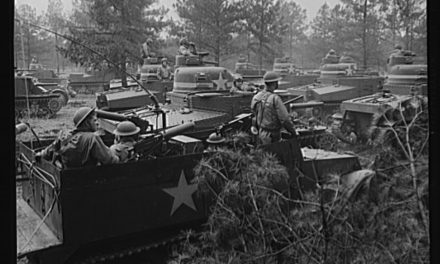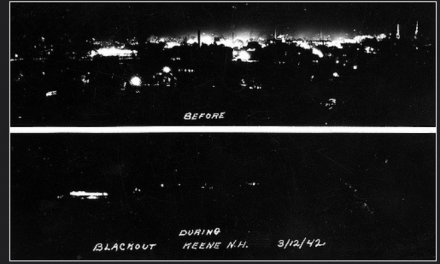By Kimberly Willig, Anna Griffin, and Gary Phillips
Prisons, by definition, deprive people of their freedom. These days, however, American prisons are serving to advance the cause of freedom. Like most of the country’s resources, they are being recruited for the war effort.
Perhaps most surprisingly, convicts are being trained in combat. Not every prisoner, to be sure—those with life sentences are ineligible for training. However, those who have the possibility of getting released are itching to join the action. This is just the beginning.
At the Ohio State Penitentiary, prisoners have been sending notes and pleading with Warden Frank D. Henderson, asking to be given the chance to join the army upon release. This led to the organization of a training unit, in which 60 convicts drill for two hours a day. These are well-behaved men who were not coerced into this decision but volunteered for the good of the nation.
The 60 men were handpicked from a group of 332 ex-service men. Some were weeded out based on the severity of their crimes. They would have to be let out on parole to serve, but all are eligible for early parole, making it more likely that they will be released while the war is still being fought.
To continue this effort, a 13-week training course in the works—excluding actual weapons. The hope is to train 500 convicts who will eventually earn places in the U.S. military. Aside from training, prisoners have also been buying war bonds and stamps to aid the military effort; approximately $11,000 worth of war bonds and $3,000 worth of stamps have been purchased so far.
In Oklahoma, several convicts serving life in prison recently appealed to President Roosevelt for the opportunity to perform suicide missions for the war. Word of a suicide squad being sent out on the battleship Oregon—labeled as such because of the perceived likelihood that the ship would not return home—inspired the men.
“That’s a job which would just suit us,” said a man who spoke for the convicts. Some of the convicts were members of the U.S. armed forces who had been dishonorably discharged. The letter to President Roosevelt stated that these men would rather die for their country than in a prison: “Please help these men to redeem themselves in their own eyes, as well as in the eyes of the world.”
Governor Leon Phillips of Oklahoma voiced his support for this idea. With the U.S. struggling to notch victories against the Japanese, the country needs as much help as possible. If these men are willing to sacrifice themselves for the greater good, the thinking goes, why not let them?

Warden Clinton T. Duffy of San Quentin Penitentiary talks with two inmates who just donated blood to the Red Cross. Photograph by Ann Rosener. From Library of Congress.
In addition to preparing to fight, prisoners are helping to provide the tools of war. Prison production facilities have been transformed into war laboratories, where inmates train for manufacturing jobs and can develop trade skills required to produce war materiel.
The War Labor Board (WLB) announced its intent to allow prisons to participate in war production on March 28. The Prison Industries Association confirmed that 167,000 inmates are eligible for participation in wartime production—they will account for an estimated $200 million worth of goods. While the WLB announced its support only two months ago, the idea of inmates engaging in manufacturing is not entirely new. In 1941, U.S. prisons produced $27 million worth of goods including metal, textiles, and canned food. But the 1942 output is sure to dwarf that figure.
Maury Maverick, Chief of the Bureau of Government Requirements, affirmed the necessity of state prisons in wartime production, indicating that they could be a “tremendous asset.” Although several state laws prohibit the use of prison-made items, the Bureau of Government Requirements intends to arrange for the export of prison-made items for use by the Allies.
In April, the Justice Department announced prisons would be required to convert production facilities to “war factories,” demanding longer volunteer hours for the inmates. This directly parallels the WLB announcement, indicating that the U.S. government across the board favors the involvement of inmates and prisons in these services. The Federal Reformatory at Chillicothe, Ohio is now known for its reputable aircraft mechanics program, with 300 men enrolled in its training program. The Federal Bureau of Prisons said that programs like this one, involving longer hours, training classes, and work, could lead to jobs for the inmates after their release. Therefore this program may benefit peacetime society as well as the war effort, as reintegration of ex-convicts into civilian life can be difficult.
Elsewhere across the country, penitentiaries are finding yet another way to support the war effort: by serving as homes and learning centers.
Throughout the United States, prison cells that recently held convicts are temporarily housing soldiers. An uncomfortable cot where a murderer may have slept is now the same bed that a member of the military tucks into for the night. A mess hall filled with metal seating bolted the ground is where some draftee will enjoy his next meal. Unkempt rec yards are where the nation’s armed forces find themselves preparing for battle. There, they do everything from practicing assembling weapons to combat training. It’s like going to college for soldiers, but the facilities are not nearly as nice.
Still, the space provided by America’s prisons are a welcome resource for the military.
Take Terminal Island Prison for example. Located in Los Angeles, Calif., the federal correctional institution cost $2 million to construct. Opened in 1938 with an original inmate population of 650, the prison was housing approximately 800 convicts up until a few weeks ago. It once even held notorious bootlegger and crime boss Al Capone.
Now, however, Terminal Island is a receiving station for the United States Navy and marines.
Several hundred fighters are calling the prison home with America at war. They are transients—men who are either being trained on-site or simply making a pit stop before their next assignment. In addition, the Navy is building ships on the prison’s property, though it mainly serves as a home for these soldiers.
Other publicly owned buildings (like schools and community centers) are providing the same services, but there is something different about being in a prison. Chances are, these soldiers did not expect to be behind bars when they enlisted—even if it is temporary.
Sources:
“PRISON INDUSTRIES CALLED ON FOR AID: WPB Makes Plans for Use of Facilities of States.” New York Times. 29 Mar 1942: 7
“Laws Don’t Prohibit War Productions In Prisons, Biddle Says.” Washington Evening Star. 08 May 1942: 7.
“Prisoners Toil to Help Nation Speed Up Production for War.” The Washington Post. 06 Apr 1942: 6.
“LIFE-TERM FELONS ASK ‘SUICIDE’ DUTY.” (n.d.). New York Times, p. 23.
“Ohio State Penitentiary Prisoners Form Training Legion To Fight For U.S.” (1942, May 4). LIFE, 32.
“Terminal Island Prison Is Now Receiving Station For U.S. Navy Recruits.” (1942, May 4). LIFE, 33.





